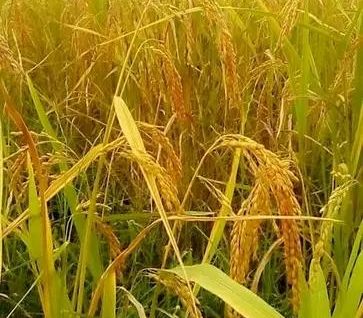As we roam across the continent, we come across Lanre Fadayomi in Ogun State of Nigeria. Mr. Fadayomi, or LanreRice, as he prefers to be called, is a rice farmer, with operations through his company Real Foster CAMS Limited, in both Lagos and Ogun States in the Southwestern part of the country.
This is my second story from Nigeria, but I have never posted anything about rice, so I felt this was a great opportunity to bring something new to you all.
LanreRice has been in agriculture for ten years. He has done various projects such as plantains, cucumbers, watermelons, and cassava, for example. The projects depended on available land leases and because of that were not as stable as he would have liked to. However, as LanreRice tells me, each project was worth it, even if it was only for the experience and the education, I got from it. If you do not try, you will not succeed, and by trying, and trying different things you expand your knowledge and are better prepared for the next project. All these projects came alongside the rice”.
This leads to the next question, why rice? “You may say it was by chance”, LanreRice tells me smiling, “I was doing sales at the time, ten years ago, when I saw an article about then governor, Babatunde Raji Fashola, commissioning an ultra-modern Rice Mill in the region. I did not know anything about rice at the time but this caught my curiosity and prompted me to go, in person, to the Ministry of Agriculture to enquire on how interested individuals can be part of the state rice production as posted in the daily newspaper. The World Bank was the sponsor of the program and Lagos State happened to be one of the beneficiary states in the southwest of the region, so I was given the program model as drawn out by the World Bank”.
Quite a story indeed. And that’s where your journey started? “Yes, it did. I never thought I’d get this far, and honestly, at the moment I was only dreaming of making good money in the return for hard work and dedication, I promised myself to do. Then little by little, with hard work, focus, dedication, determination, headaches, and heartbreaks, in quantities much greater than I could have imagined when they handed me the farming manual being handed out to me as an enthusiastic newbie ‘ricepreneur’”.
“I can boldly say here”, LanreRice adds, “that rice chose me because I knew absolutely nothing about practical farming not to mention at commercial levels. It’s been all fun mixed with some sort of regrets because all that was contained in the World Bank rice project manual did not materialize. The dream of making quick money has been prolonged till this day. I have kept my hopes alive, while a whole lot of my colleagues in the race have bowed out. It’s not a funny saga I must confess but on the whole, it has been worth it for me”.
So, the other crops have been side projects, that pop up and you then drop them along the way, as you continue with the rice? “Yes, sort of, but not completely thought. The issue has always been land availability. The lease agreements are short, and every year the lease comes up for renewal, the price is increased. This means after recalculating each project, if the new lease proposal is not going to allow me to run the project profitably, I must move and search for another location, and sometimes that means I’ll be forced to change crops, based on the soil, or because I have to settle on an unfavorable area, where access is hard and therefore, I must select crops that need minimum maintenance, etc. Additionally, the limited availability of seeds, herbicides, and fertilizers, has put constraints on the other projects I have had in the past.”
“Despite other crops being side projects, my Cassava crowd farming campaign is still on and powerfully running to alleviate the present threat to food security and sustainability in the country to avert the looming famine that can eventually lead to war breakout. It is a different farm model, designed to overcome local challenges in farming,” LanreRice adds. We will get back to this concept in later posts.
LanreRice has 30 hectares under rice production, 5 in Lagos State, and 25 in Ogun State, divided into two locations with 15 and 10 hectares respectively. The yield is about 3 tons per hectare on average. That gives room for improvement, since while the average yield is 3-6 tons per hectare, in Australia and Egypt it can go as high as 20 tons per hectare.
Stay put and follow Agri Project Africa for the whole story and other stories like this. Please share LanreRice’s story on your platforms.












